Secret seaside: Italy's forgotten beach destinations
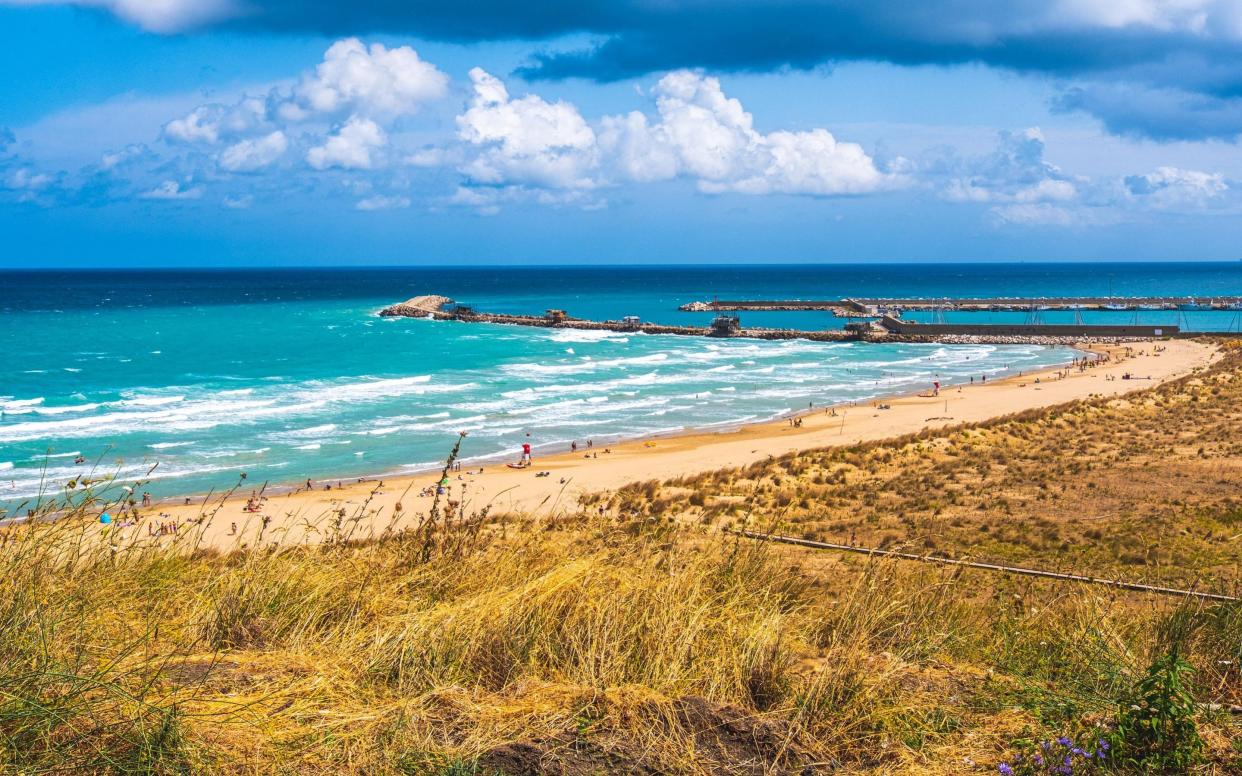
Sun and sand holidays to the big Italian beach resorts are not as popular as they once were. But maybe that’s because we don’t know the coast as well as we might. Italy has some wonderful stretches of sand and some delightful seaside towns, ideally suited to family holidays. Here is our pick of some of the best.
1. Monte San Bartolo, Marche
Italians love the Marche for its string of small, no-nonsense resorts, the sorts of places parents went to as children and take their children in turn: nothing fancy, modern hotels, good, inexpensive food, safe bathing and lots of sand. Chief among these larger resorts are Gabicce Mare, Senigallia – known for its “velvet” sand – and San Benedetto del Tronto.
Equally, though, the region has lots of empty or less-developed beaches. In the north, between busy Pesaro and Cattolica, is Monte San Bartolo, a protected reserve, with plenty of walking trails and unspoilt beaches. A scenic road shadows the coast, linking superb villages such as Casteldimezzo and Fiorenzuola di Focara, with a fine place to stay locally in the shape of the Castello di Granarola.
Nearest airport: Ancona (other options include Perugia and Bologna).
Base yourself at: Castello di Granarola (castellodigranarola.it/en).
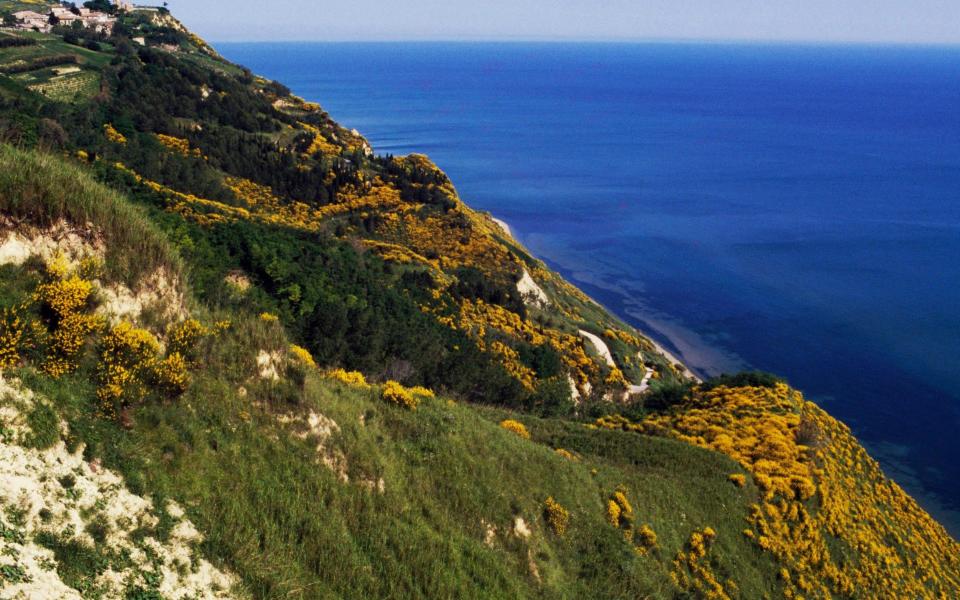
2. The Maremma, Tuscany
The past casts a long shadow in Tuscany – especially in its south-west corner, the remote Maremma region, hard by the border with Lazio. The towns are few and the countryside empty, in part a legacy of the malarial marshes that discouraged settlement until as late as the 1950s.
This is still largely unknown territory, though the coastal enclaves – Capalbio and Chiarone, with their long, empty beaches – have become quietly popular with more well-heeled Romans. Enjoy the seaside, but base yourself in the pastoral, low-hilled countryside flanking the Albegna and Fiora valleys. The finest villages include Montemerano, Magliano in Toscana and Pereta, which are charming in the classic Tuscan manner (sleepy squares, geranium-hung streets). Others combine that same charm with plenty of genuine artistic, cultural and gastronomic interest. Among the latter, Sovana is a standout, thanks to two wonderful churches and a picture-perfect main street. Sorano and Pitigliano are also captivating.
Nearest airport: Rome or Pisa.
Base yourself at: To Tuscany (to-tuscany.com) offers dozens of properties in the Maremma (search for villas in the Grosseto area).

3. Seaside Abruzzo
Mountains are the main highlight in Abruzzo but the region’s long coast provides another compelling attraction. While some spots in the north are fairly workaday, there are two notable exceptions: the wild, glorious stretches of sand in the Riserva Naturale del Borsacchio, north of Roseto degli Abruzzi, and Torre del Cerrano near Pineto, named after the adjacent historic defensive tower.
South of Pescara, head for Punta Ferruccio near Ortona – the scene of bitter fighting in 1943: it’s not easily reached, but is worth the effort. Equally wild and lovely are the nearby Calata or Spiaggia del Turchino close to San Vito Chietino, where the contemporary hotel Le Chiave dei Trabocchi makes a fine base.
A few miles further south still, the Lido di Casalbordino is another point of pilgrimage for beach aficionados, with the simple Finis Terrae bar a favoured spot to watch the sunset. Two more beaches stand out close to Vasto, the Abruzzo’s last hurrah before the border with Molise: Punta Penna and Punta Aderci. Both are wild places in part protected by nature reserves.
Nearest airport: Pescara.
Base yourself at: Bagni Vittoria (bagnivittoria.com/en), a small B&B that perches on the clifftop above the beach near Vasto.
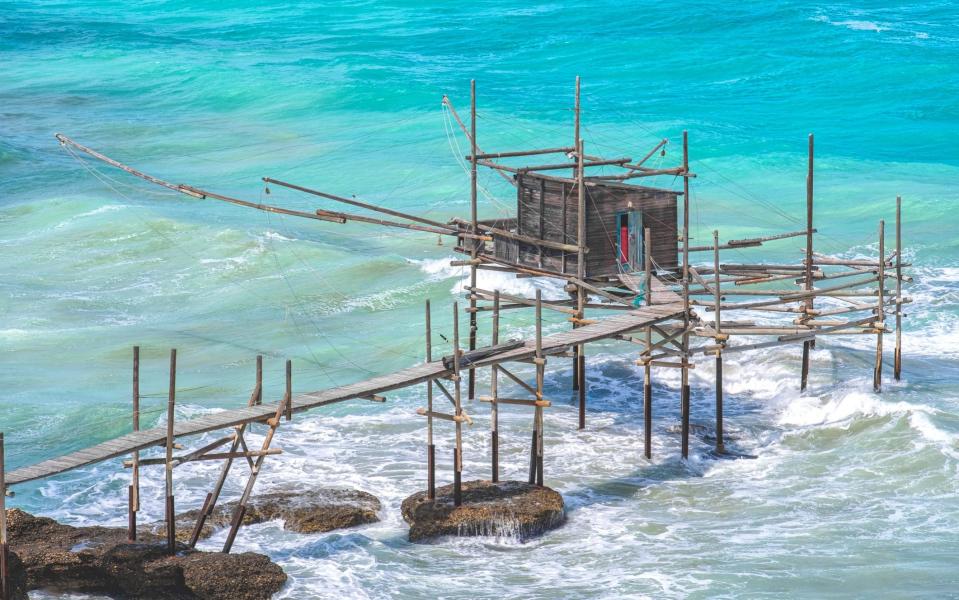
4. The Cilento, Campania
The Amalfi and the Sorrento, two halves of the same peninsula, take most of the plaudits, but further south lies this wild and mountainous enclave that’s home to some fantastic beaches and the great Greek temples of Paestum.
Several appealing villages dot its coastal margins – Agropoli, Santa Maria di Castellabate and, best of all, Acciaroli, rightly celebrated for its lovely bays and a peaceful stretch of sand that is dramatically framed by a Norman tower and the church of the Annunziata. The village is also known for its sublime seas (the water is some of Italy’s cleanest), a maze of medieval cobbled streets, and for its unusually high number of centenarians – about 300 at last count. Marina di Pisciotta is another fine base. It’s a place of narrow lanes sandwiched between pastel-painted houses, ancient stepped alleyways leading to hidden chapels, and small piazzas with their inevitable fauna of old men in hats playing cards or simply watching the world go by.
Nearest airport: Naples.
Base yourself at Hotel Marulivo (marulivohotel.it), Marina di Pisciotta’s top boutique option.
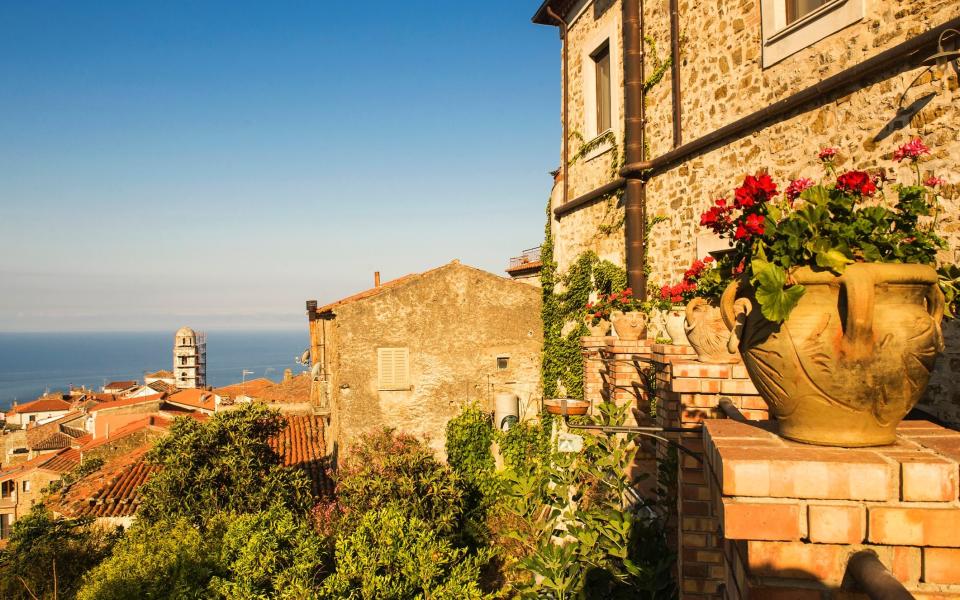
5. The Salento, Puglia
The Salento peninsula in southern Puglia is the Cornwall or the Galicia of Italy: a seagirt place of ancient and insular cultural traditions, not all of them diluted into tourist attractions. Although the Salento is not the undiscovered territory it was 30 years ago, it still seems apt, in this land’s end with its flat inland plain covered in ancient, gnarled olives, that there should be a secret bay with the evocative name of Porto Selvaggio, or “Wild Harbour”. A few miles west of the pleasant market town of Nardò, this pristine coastal enclave has enjoyed protected-area status since 1980. North of here, the sandy beaches of Porto Cesareo have all the gelato and beach games you could possibly desire, while to the south, the ancient, walled seaport of Gallipoli, with its flat-roofed white houses, a crescent of sand and a rolling, low-hilled hinterland, has been adopted by Italian politicos and showbiz folk as a chic summer hang-out.
Nearest airport: Brindisi.
Base yourself at: Palazzo Presta (palazzopresta.it) occupies a 17th-century building in pretty Gallipoli.
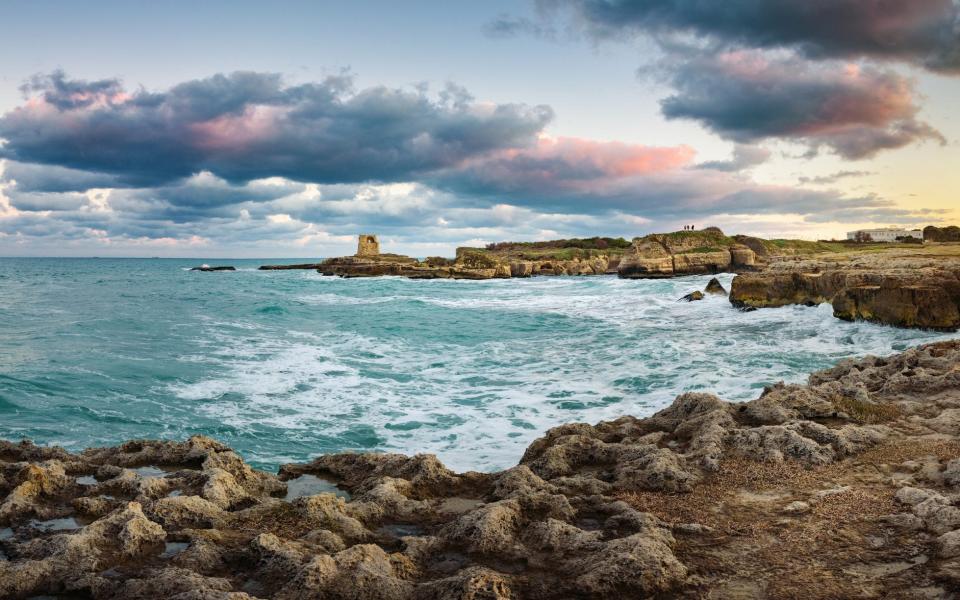
6. Forgotten Liguria
Away from bustling Portofino and the crowded Cinque Terre, Italy’s Liguria region is well stocked with pretty seaside towns still undiscovered by mass tourism. Camogli, in the north, is largely the preserve of Italians happy to have found a charming seaside town of the type that has all but vanished in much of the Mediterranean – pretty coloured houses, little fish restaurants and a sunny, scented hinterland of palms and bougainvillea. An evening stroll along the waterfront promenade is one of Italy’s great pleasures. In the south, Portovenere is a lovely place not unlike a sixth Cinque Terre village – but, crucially, with no railway access (so fewer visitors). Other options include Sestri Levante, a small, sleepy town and Italian family seaside resort with a delightful medieval centre, and Tellaro, a village close to Lerici, just south of La Spezia, the former haunt of poets Shelley and Byron.
Nearest airport: Genoa.
Base yourself at: The Vis à Vis (hotelvisavis.com/en) or Miramare (miramaresestrilevante.com) in Sestri Levante.
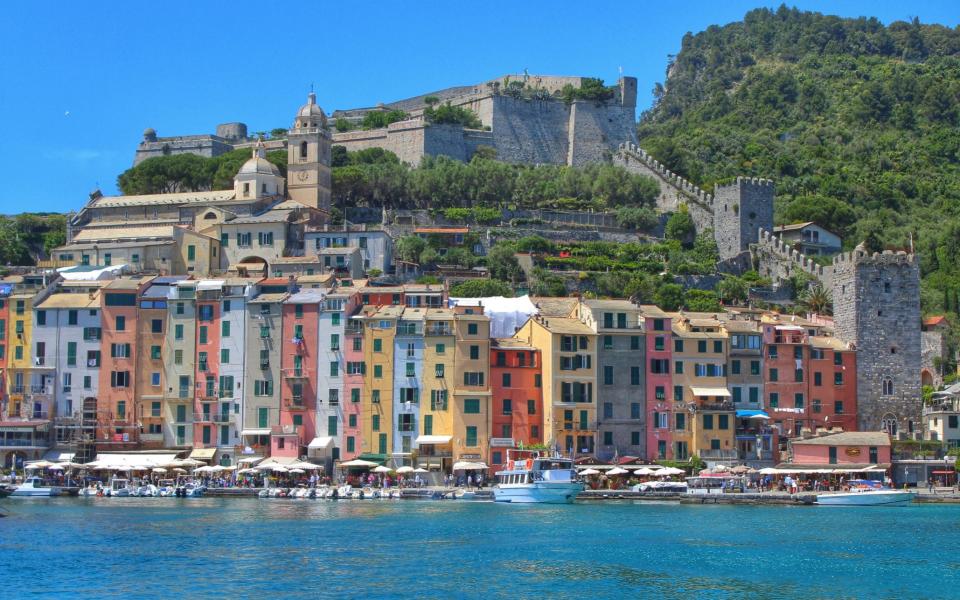
7. Tropea, Calabria
Calabria doesn’t feature anywhere like as prominently as Sicily or Puglia in Italian summer-sun brochures. The barely regulated sprawl that clutters up much of the coast is one reason. But there are honourable exceptions – like Tropea, a classy enclave that is the region’s answer to Positano or Taormina.
Locals like to laud Tropea’s red onions, a speciality celebrated across Italy, but most visitors are drawn by this town’s superb position – the historic centre is ranged along cliffs high above the waves – and some of the cleanest seas on Calabria’s western coast. The town’s two main beaches, divided by the rock-top church of Santa Maria dell’Isola, are some of the region’s biggest and best.
Nearest airport: Lamezia Terme.
Base yourself at: Hotel Rocca della Sena (hotelroccadellasena.it), an intimate boutique hotel with direct access to Tropea beach via a private stairway.
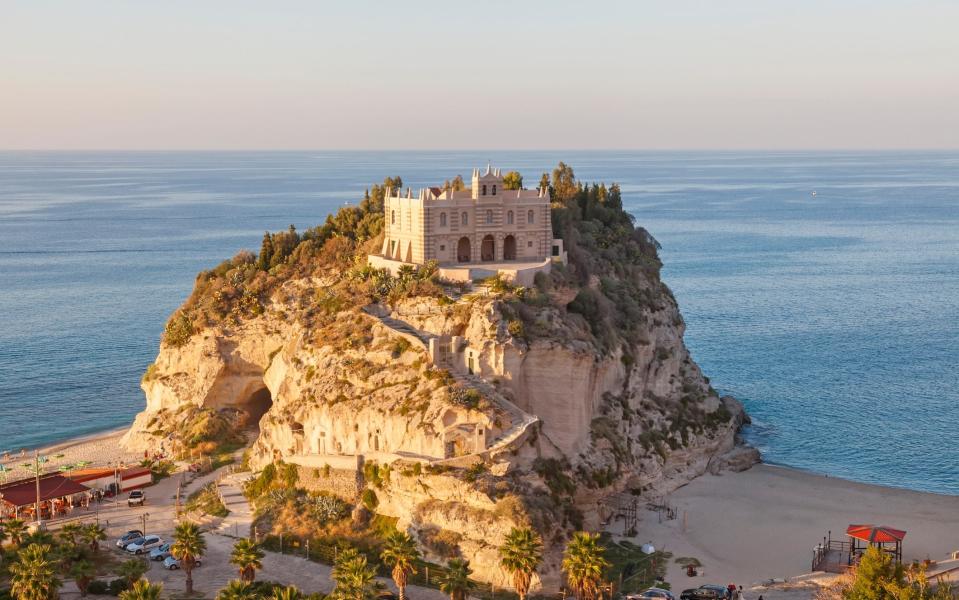
8. Cala Gonone, Sardinia
Ditch the overcrowded (and overpriced) Costa Smeralda in favour of this spot on Sardinia’s rugged eastern coast. It’s Cala Gonone’s very inaccessibility that forms a good part of its appeal. Not so long ago, you could only reach the Golfo di Orosei resort by boat. Things have moved on, and now there’s a neat road tunnel bored through the wall of mountains that separate it from the rest of the island. Once emerged from the tunnel, travellers are confronted by a steep plunge to the coast, and the spectacle of glorious coastline stretching out of sight to the north and the south. At the bottom, you’ll find yourself in a fairly modern huddle of villas, hotels and restaurants backed by a belt of pine woods. Despite the development that has transformed it in the past half-century, there are no eyesores to spoil the view. Life gravitates towards the long seafront promenade, with its scattering of low-key bars and restaurants, while the main beach is perfect for families. But it’s the sandy coves further afield that have elevated Cala Gonone’s status among beach connoisseurs.
Nearest airport: Olbia.
Base yourself at: Hotel Cala Luna (calalunahotel.com) and Hotel Pop (calagononehotelpop.it) are both affordable options.
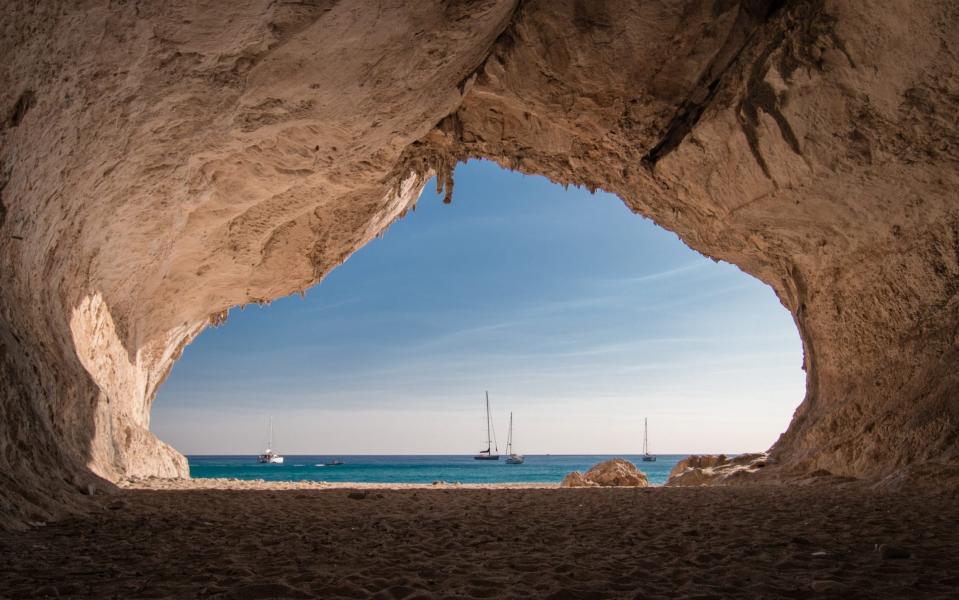
9. Marettimo, Sicily
This remarkably green outcrop in the Mediterranean, off the west coast of Sicily, is a place for cultured, long-stay regulars rather than hit-and-run day-trippers. Car-less, (almost) hotel-less and refreshingly free of the snobbery of other Italian island paradises such as Capri or Pantelleria, Marettimo remains a very special destination for walkers, scuba-divers and sunseekers looking for a relatively unspoilt island.
There’s hardly a tree to be seen on its more accessible and more built-up neighbours, Favignana and Levanzo, but Marettimo itself offers cool Aleppo pine groves on its wilder western side, and its walking trails afford fantastic sea views.
The town – the island’s only settlement – is ageless and wonderfully simple, a straggle of whitewashed houses tumbling down towards the water, shutters painted in shades of blue, which reflect the pristine sea around them, and a smattering of small fishing boats tied up at a ramshackle port. There’s one beach, with pebble-strewn sand, just south of the main town, but most visitors opt to access the translucent sea from rock perches that are reached via the island’s well-tended network of paths.
Nearest airport: Trapani (from where you can catch a ferry to the island).
Base yourself at: One of the few hotels on the island, Marettimo Residence (marettimoresidence.it) offers dozens of eco-friendly whitewashed self-catering bungalows.
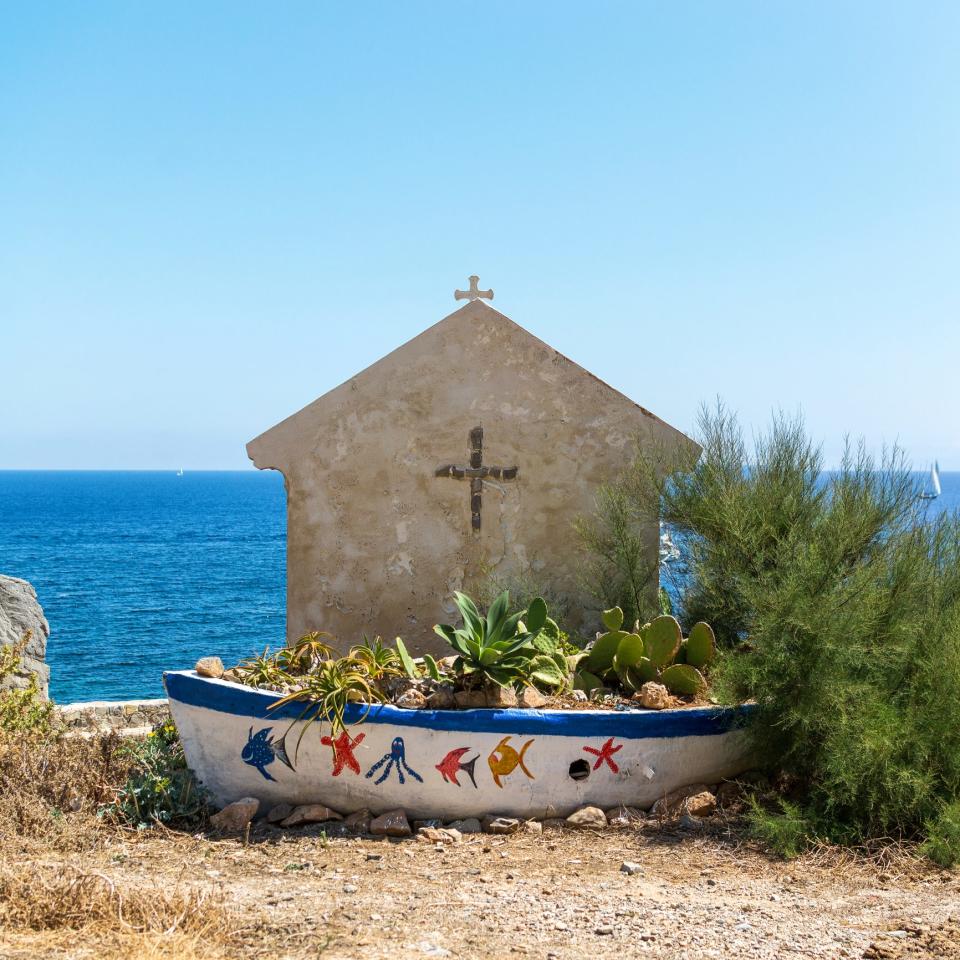
10. Po Delta Beaches, Veneto & Emilia Romagna
Straddling two regions, the delta of Italy’s longest river is a fascinating, mysterious protected area of samphire-studded mudflats, fishing reserves and a maze of reed-edged waterways plied by duck hunters and reed cutters in flat-bottomed boats. Where this liquid landscape meets the sea, a series of sandy islands known as scanni protect the fragile lagoon ecosystem behind from Adriatic tides. Many can only be reached by boat, but a few are more easily accessible – like Marina di Boccasette, a 20-minute drive or a pleasant hour’s cycle ride from Ca’ Tiepolo, the central settlement of the multi-village Veneto delta town of Porto Tolle. From the car park, a footbridge leads across to the long sandflat island. Near this access point, three beach bars offer meals, snacks, drinks and sunloungers, but you have only to walk up or down the fine white sand for five minutes and you’re in a wild beachcomber’s paradise. Barricata, another long beach that can be reached from Porto Tolle, has a little more of a summer scene, but here, too, a short walk will bring you to a wild dunescape far from the pizza and parasols. The smaller Emilia-Romagna part of the delta to the south has the pick of the sightseeing draws, in the form of the isolated Abbey of Pomposa, a magnificent Benedictine monastic complex dating back to the eighth century, and this watery region’s finest historic town, Comacchio, with its Venetian-style canals.
Nearest airports: Bologna and Venice Marco Polo.
Base yourself at: Canneviè (oasicannevie.com), a restored 16th-century fishing lodge.
Contributions from Tim Jepson, Lee Marshall and Rob Andrews.

